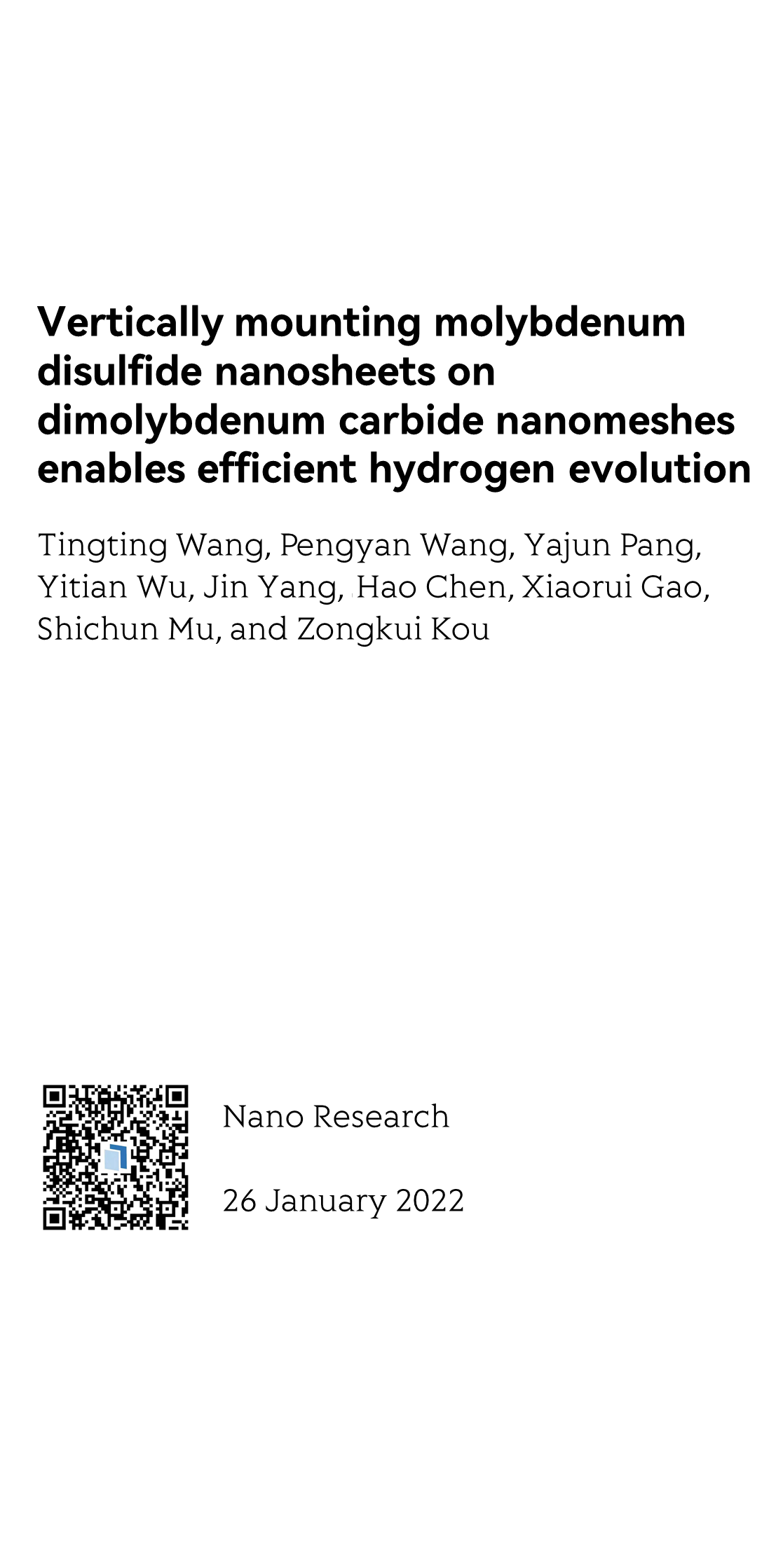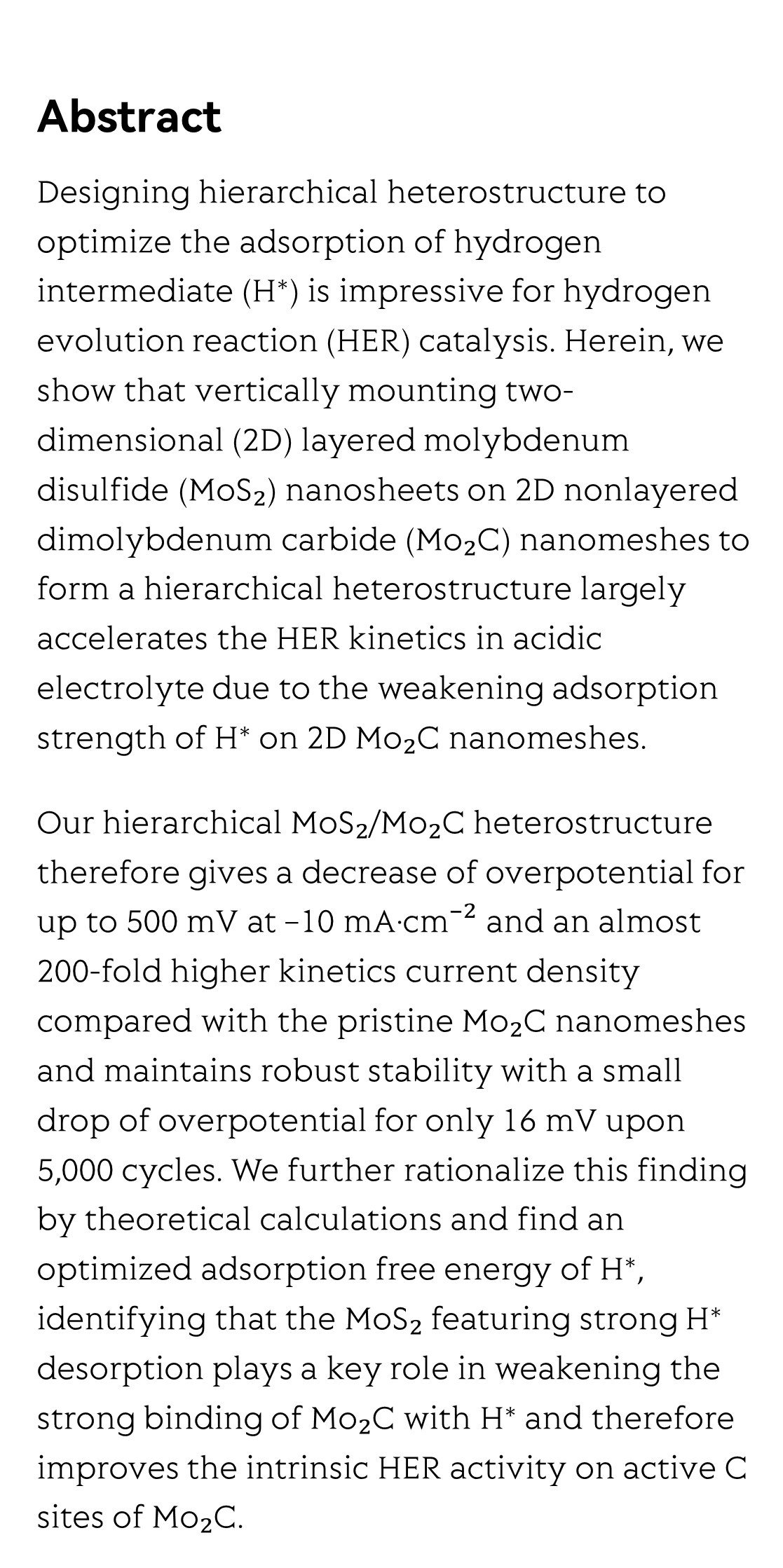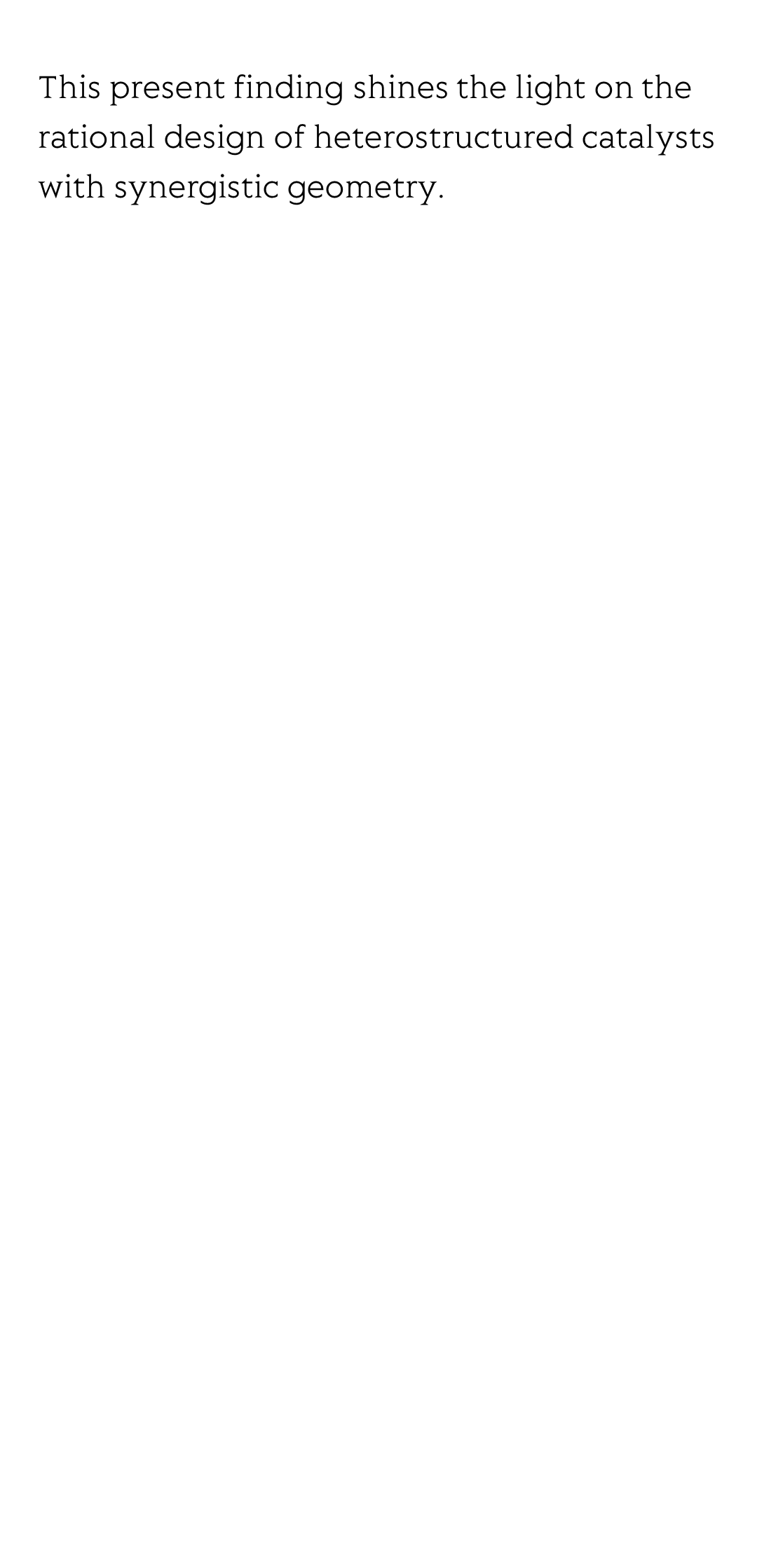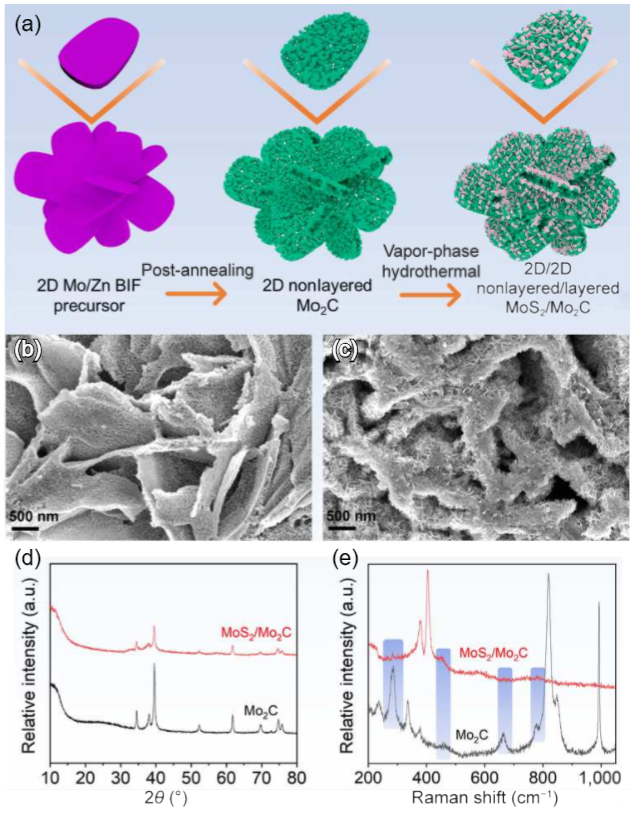(Peer-Reviewed) Vertically mounting molybdenum disulfide nanosheets on dimolybdenum carbide nanomeshes enables efficient hydrogen evolution
Tingting Wang 王婷婷 ¹, Pengyan Wang 王鹏颜 ¹, Yajun Pang 庞亚俊 ², Yitian Wu 吴倚天 ², Jin Yang 杨金 ², Hao Chen 陈浩 ², Xiaorui Gao 高晓蕊 ³, Shichun Mu 木士春 ¹, and Zongkui Kou 寇宗魁 ¹
¹ State Key Laboratory of Advanced Technology for Materials Synthesis and Processing, Wuhan University of Technology, Wuhan 430070, China
中国 武汉 武汉理工大学 材料复合新技术国家重点实验室
² College of Chemistry and Materials Engineering, Zhejiang A&F University, Hangzhou 311300, China
中国 杭州 浙江农林大学化学与材料工程学院
³ Jiangsu Laboratory of Advanced Functional Materials, School of Electronic and Information Engineering, Changshu Institute of Technology, Changshu 215500, China
中国 常熟 常熟理工学院电子与信息工程学院 江苏省新型功能材料重点建设实验室
Abstract
Designing hierarchical heterostructure to optimize the adsorption of hydrogen intermediate (H*) is impressive for hydrogen evolution reaction (HER) catalysis. Herein, we show that vertically mounting two-dimensional (2D) layered molybdenum disulfide (MoS₂) nanosheets on 2D nonlayered dimolybdenum carbide (Mo₂C) nanomeshes to form a hierarchical heterostructure largely accelerates the HER kinetics in acidic electrolyte due to the weakening adsorption strength of H* on 2D Mo₂C nanomeshes.
Our hierarchical MoS₂/Mo₂C heterostructure therefore gives a decrease of overpotential for up to 500 mV at −10 mA·cm⁻² and an almost 200-fold higher kinetics current density compared with the pristine Mo₂C nanomeshes and maintains robust stability with a small drop of overpotential for only 16 mV upon 5,000 cycles. We further rationalize this finding by theoretical calculations and find an optimized adsorption free energy of H*, identifying that the MoS₂ featuring strong H* desorption plays a key role in weakening the strong binding of Mo₂C with H* and therefore improves the intrinsic HER activity on active C sites of Mo₂C.
This present finding shines the light on the rational design of heterostructured catalysts with synergistic geometry.
Flicker minimization in power-saving displays enabled by measurement of difference in flexoelectric coefficients and displacement-current in positive dielectric anisotropy liquid crystals
Junho Jung, HaYoung Jung, GyuRi Choi, HanByeol Park, Sun-Mi Park, Ki-Sun Kwon, Heui-Seok Jin, Dong-Jin Lee, Hoon Jeong, JeongKi Park, Byeong Koo Kim, Seung Hee Lee, MinSu Kim
Opto-Electronic Advances
2025-09-25
Dual-frequency angular-multiplexed fringe projection profilometry with deep learning: breaking hardware limits for ultra-high-speed 3D imaging
Wenwu Chen, Yifan Liu, Shijie Feng, Wei Yin, Jiaming Qian, Yixuan Li, Hang Zhang, Maciej Trusiak, Malgorzata Kujawinska, Qian Chen, Chao Zuo
Opto-Electronic Advances
2025-09-25







